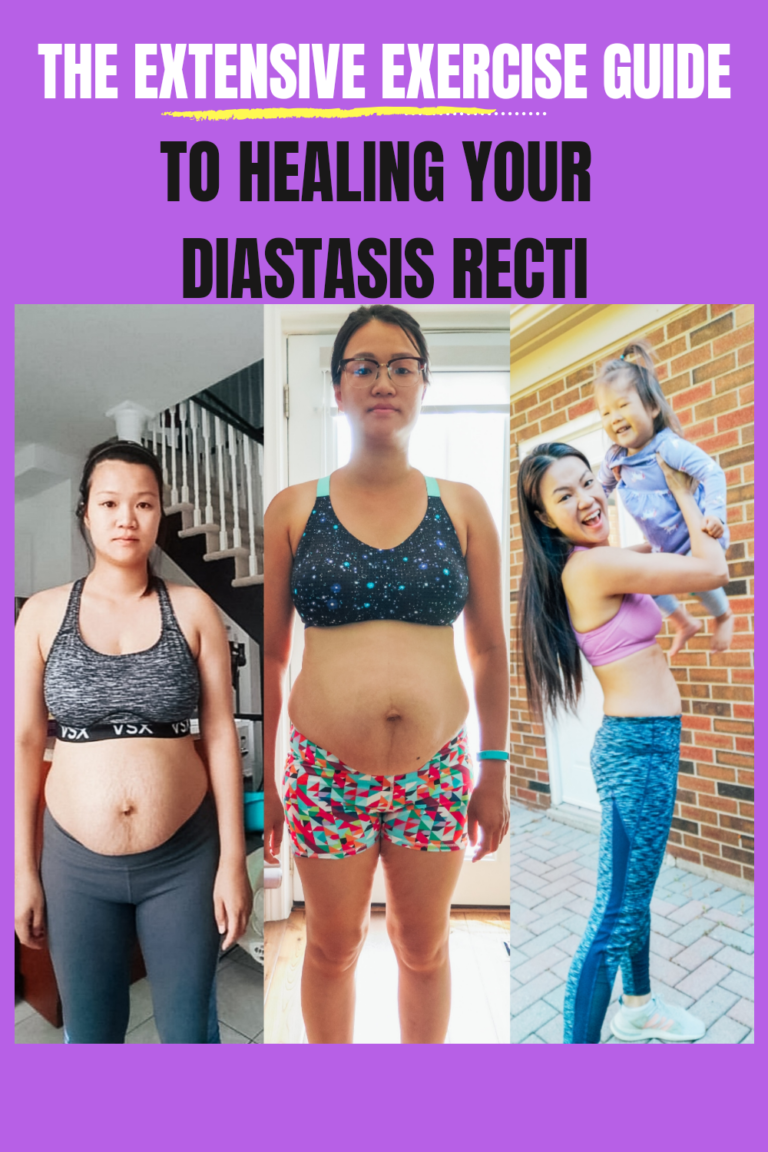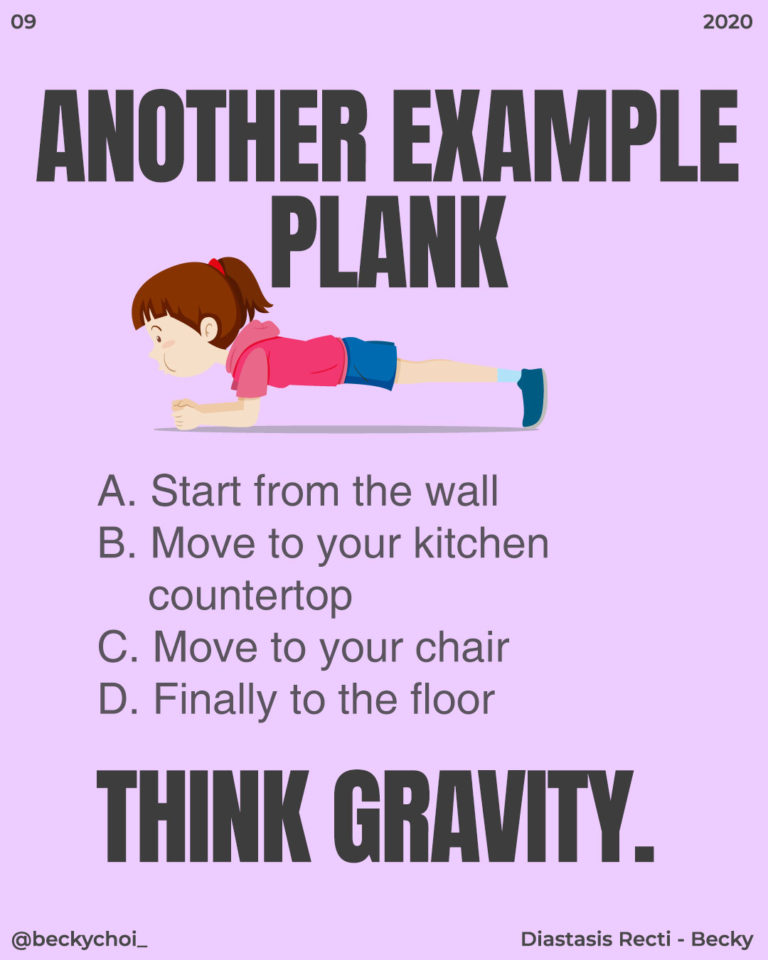1. The best type of exercise to heal DR
Asking what is the best type of exercise to heal DR, is similar to asking a woman what is her favourite pair of shoes.
Honestly, I love heals as they make me look taller and skinnier but then again I also love my running shoes because they are so comfortable.
It would thus be better to ask, what shoes would suit me best according to the specific occasion.
For example, if I am going to an outdoor reception tonight and it is 15 degrees, I would definitely prefer heals above running shoes as they are the best suit for that occasion.
In a similar manner the best exercise to heal DR is the exercise that best work for you.
Each woman is unique and therefore what works for Nancy or Sally would not necessarily work for you. Always remember that each one of us has different birth experiences, body types, alignments, diastasis and history.

Here are some great tips to help you with your DR exercises:
- If you are mostly doing exercises lying on your back, try to incorporate different positions of exercising. For example, try exercises on your side, on your hands and knees or even upright.
2. If you notice you are only breathing into your chest or shoulders area whilst exercising, rather focus on and learn how to take a 360 degree inhale.
3. If your belly is distended with every exercise and you find yourself only breathing into your belly, you should rather take a 360 degree inhale as mentioned above.
4. If you experience any bulging or doming in your tummy while exercising, please try the following. Try to maintain tension in your connective tissue and take the exercise slower while noticing when your stomach starts forming a dome.
If you notice that your stomach domes easily, then rather modify the exercise to avoid doming. If doming do not occur, continue with the exercise to build endurance in your muscles.
5. If you feel that the exercises are not doing anything, try contracting the front of your pelvic floor, brace your muscles and contract a little bit more. Repeat this once or twice more while exercising.
6. In the case where your back feels tense or sore, please check for the following. Ensure that your back is not overarching while you exercise. If you find that your back is lifting off the floor when you lie down, rather use pillows to support your head and shoulders.
7. The moment you feel heavy or pressured in your pelvic floor, rather stop the exercise you are busy with and scale it back.
8. Referring to the narrowing of your DR gap for feedback is not accurate as you should rather measure your DR depth with your nails and knuckles.
Always remember the following when doing your ab exercises with DR. Never be afraid to try harder exercises.
You do not need to worry if you experience any form of doming, bulging, sinking in or bearing down in your DR while you exercise, as it is only a form of feedback.
Simply try your exercise again with more focus or modify it as needed.
2. When do you know you are ready for harder exercises?
Does it mean you are ready for harder exercises when you do not see any more doming, sinking in or bulging? —->

Always remember that your core muscle, like any other muscle in your body, needs slightly more load than it can handle to become stronger. In other words, in order for your core muscles to gain strength it needs to be challenged with weight or resistance.
Once you have the foundations of deep breathing, awareness of body alignment in various positions, bracing and mind-muscle connection in place; then it is time for more advanced exercises.
Always remember that it is important to implement these foundational techniques when moving to more advanced exercises.
Some key questions you can ask yourself to determine if you are ready for more advanced exercises:
- Is it possible to hold the position well without compromising your posture?
- Do you feel that the exercise is not challenging your core?
- Are you not experiencing any tension or soreness after exercises?
- Can you complete the reps of exercises with ease?
If you answered yes to most of these questions then I want to congratulate you as you are definitely ready for more advanced exercises.
This is an indication that you are making great improvement and getting stronger. Continue in becoming even stronger by challenging yourself more.
Here is an example of how to progress your exercises:
Doing a plank is a great exercise to help you get stronger. Progress with your plank in the following way as you get stronger.
- Start by doing your plank against the wall
- Then move to doing the plank on the kitchen countertop
- Next you can move the plank to a chair
- Finally you can do it on the floor
3. Why you should do normal ab exercises with DR
When you have DR, It is important to ask yourself what your goal is for wanting to do normal ab exercises. Your answer to this question can lead into two very different paths.
Do you want to do more normal ab exercises so you can flatten your stomach or do you want to do normal ab exercises to gain strength?
If your answer is you want to do normal ab exercises to flatten your stomach…
I hate to break this news to you, but unfortunately it is not going to work (right away). The reason therefore is that if you have fat over your abs, as most of us with DR do, spot reduction does not work.
In other words, fat won’t be burned and flatten your stomach by focusing on exercises for your abs.
Take into consideration that when you exercise, your body uses energy from your entire body and not only the part you’re working on.
I often hear moms say,
“I lost weight all over my body but my stomach still pooches out.”
Remember that your body fat is most probably still pretty high and unfortunately we store a lot of fat in the lower belly; which is also the last place to lose weight.
I thus recommend that you shift your focus to your diet and a consistent total body workout plan with cardio and weights, if you want to do ab exercises to flatten your stomach.
If your answer is you want to do normal ab exercises to gain strength…
Then mama, you are on the right path! So often we are scared in the beginning to start normal ab exercises, as we do not want to make the core muscles worse than what they already are.
However, what you need to understand is that when you have DR your midline connective tissue is slack and the core muscle around that area is also slack. This just means there is a muscle imbalance.
When you have a core muscle imbalance, it is important that you use various exercises to target all sides of the core.
Also, you cannot expect your core muscles to strengthen only by doing deep core work like postural exercises and breathing. It is thus necessary to exercise your core muscles in various ways to get them stronger.

The truth is…
It is okay to do ab exercises and even advanced ab exercises when you have diastasis. My points above said it all.
I would encourage you to start with the important foundational exercises of breathing and posture at first but then to continue with ab exercises as soon as you are ready to help you gain more strength in your core.
Finally, remember that normal ab exercises are beneficial to help you heal from DR and to live a healthier life as a mom. You are the center of everything in the household. You got this.
Becky




